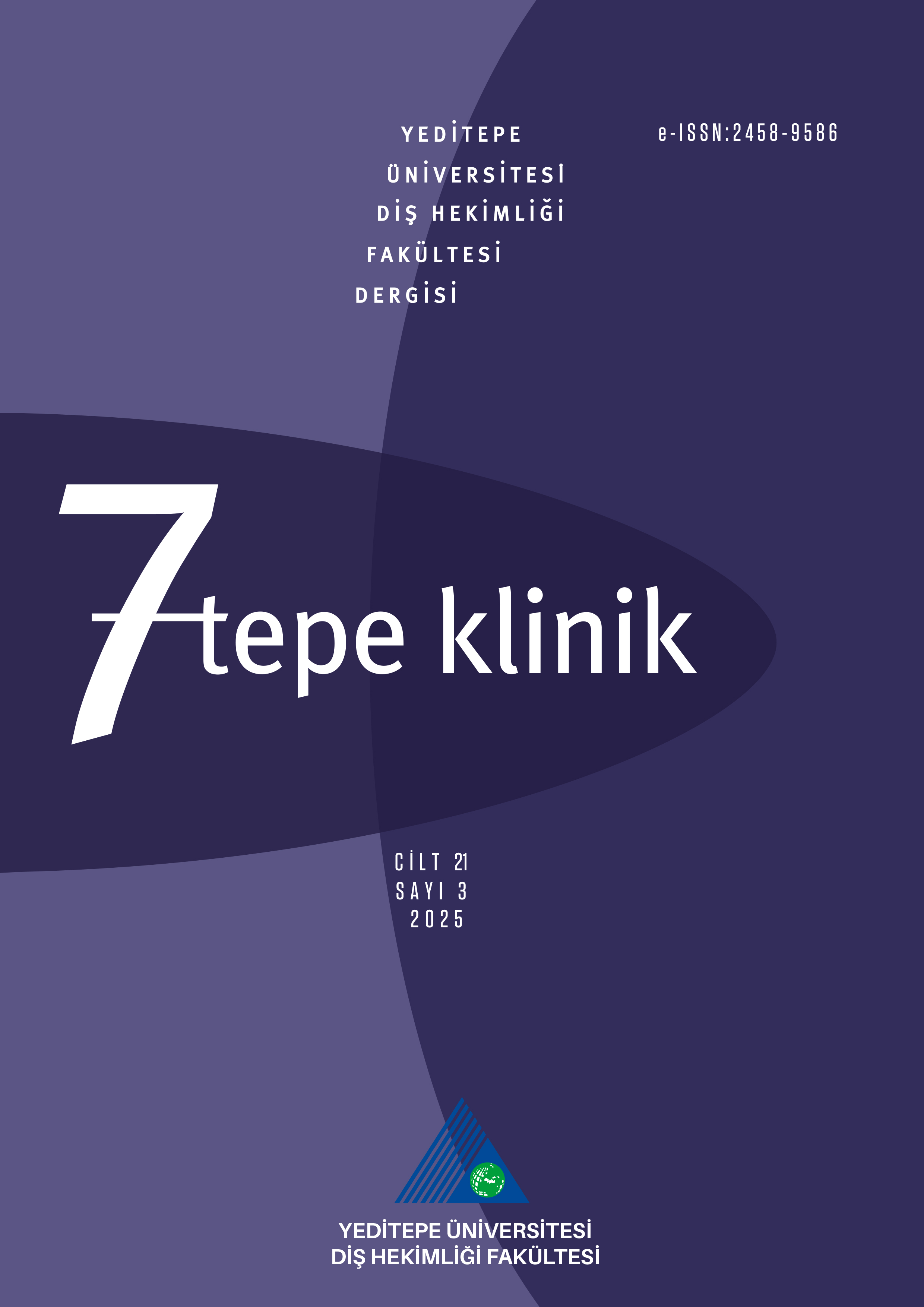Hemato-Onkoloji Hastalarında Çenelerin İlaç ile İlişkili Osteonekrozunun (MRONJ) Konik Işınlı Bilgisayarlı Tomografi ile Değerlendirilmesi: Olgu Serisi
Umut PamukçuGazi Üniversitesi, Diş Hekimliği Fakültesi, Ağız, Diş ve Çene Radyolojisi A.D., AnkaraGenel olarak antirezorptif ve antianjiyojenik ilaç kullanan hastalarda, çene kemiklerinde dental bir operasyona sekonder gelişebilen osteonekroz (Medication-Related Osteonecrosis of the Jaw, MRONJ) klinik ve radyolojik bulguları olan, nadir ancak ciddi bir tablodur. Bu olgu serisinin amacı, MRONJ teşhisi almış hastaların demografik özellikler ve medikal anamnez bilgileri ile birlikte konik ışınlı bilgisayarlı tomografi (KIBT) bulgularının sunulmasıdır. Yaş ortalaması 62,7 olan 23 MRONJ hastasının %52,2si kadın %47,8i erkekti. Hastaların %4,3ü denosumab kullanırken %95,7si bifosfonat kullanmaktaydı. Multiple myelom, prostat ve meme kanseri en sık primer hastalıklardı (%21,7). Vakaların %65,2sinde sadece mandibulada, %21,7sinde sadece maksillada ve %8,7sinde her iki çenede de MRONJ mevcuttu. Mandibulada sadece posteriorda gözlenen MRONJ, maksilladaki 7 olgunun 2sinde anteriorda gözlendi. KIBT görüntülerin tümünde tespit edilen destrüksiyon, sekestrum ve osteolizis MRONJ için patognomik radyolojik bulgulardı. Mandibuladaki olguların %55,6sında mandibular kanal, maksilladaki olguların ise %57,1inde maksiller sinüs tutulumu vardı. Patolojik fraktür sadece mandibulada ve hastaların %26,1inde tespit edildi. Sonuç olarak, MRONJ, genelde kanser hastalarında, diş çekimi gibi travmatik cerrahi bir operasyona sekonder ve mandibular lokasyonlu, radyolojik olarak ise destrüksiyon, sekestrum ve osteolizis ile gözlenmektedir.
Anahtar Kelimeler: MRONJ, çene, radyoloji
Evaluation of Medication-Associated Osteonecrosis of the Jaws (MRONJ) with Cone-Beam Computed Tomography in Hemato-Oncology Patients: Case Series
Umut PamukçuGazi University, Faculty of Dentistry, Department of Oral, Dental and Maxillofacial Radiology, AnkaraOsteonecrosis, which may develop secondary to a dental operation in the jaw bones in patients using antiresorptive and antiangiogenic drugs, (Medication-Related Osteonecrosis of the Jaw, MRONJ) is a rare but serious condition with clinical and radiological findings. The purpose of this case series is to present the cone beam computed tomography (CBCT) findings together with demographic characteristics and medical history information of patients diagnosed with MRONJ. 52.2% were female and 47.8% were male of 23 MRONJ patients with a mean age of 62.7 years. While 4.3% of the patients were using denosumab, 95.7% were using bisphosphonates. Multiple myeloma, prostate and breast cancer were the most common primary diseases (21.7%). MRONJ was present only in the mandible in 65.2% of the cases, in the maxilla only in 21.7%, and in both jaws in 8.7%. MRONJ, which was observed only posteriorly in the mandible, was observed anteriorly in 2 of 7 cases in the maxilla. Destruction, sequestrum, and osteolysis detected on all CBCT images were pathognomonic radiological findings for MRONJ. There was mandibular canal involvement in 55.6% of cases in the mandible, and maxillary sinus involvement in 57.1% of cases in the maxilla. Pathological fracture was detected only in the mandible and in 26.1% of the patients. In conclusion, MRONJ is generally observed in cancer patients with mandibular location secondary to a traumatic surgical operation such as tooth extraction, and radiologically with destruction, sequestrum and osteolysis.
Keywords: MRONJ, jaw, radiology
Makale Dili: Türkçe



